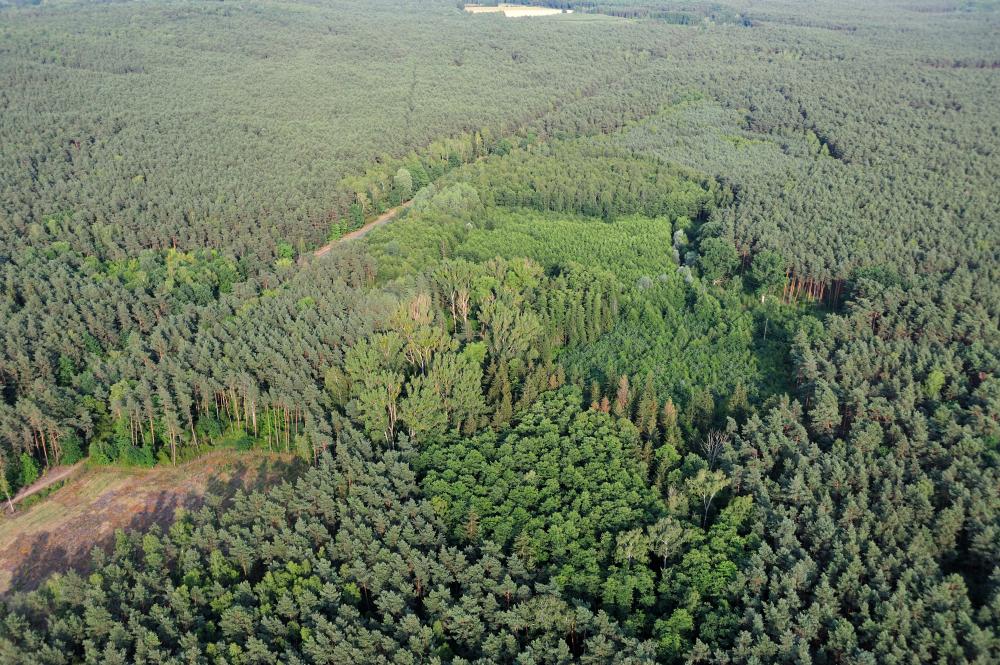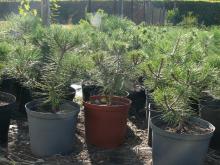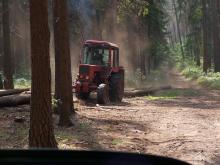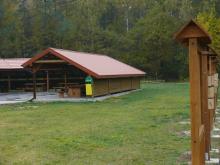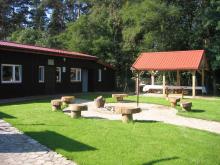 Asset Publisher
Asset Publisher
Polish forests
Poland is in the European lead, while concerning the area of all forests. They cover about 29,2 % of the country territory, and grow within the area of 9,1 million hectares. The overwhelming majority of the forests is state owned, of which almost 7,6 million hectares are managed by the State Forests National Forest Holding..
The number of Polish forest is still growing. The forestation rate of the country has increased from 21 % in 1945 to 29,2 % at the moment. Between 1995 and 2008, the forest area increased by 310 thousand ha. The basis for afforestation works is the "National Programme for Increasing the Forest Cover" (KPZL), assuming an increase of the forestation rate up to 30 % by 2020 and up to 33 % by 2050. Polish forests abound in flora, fauna and fungi. 65 % of the total number of animal species live there.
The forests grow in our country on poor soils, mainly because of the development of the agriculture in previous years. It influences the distribution of the types of the forest sites in Poland. Over 55 % of the forest areas is covered with coniferous forests. In other areas, there are forest sites, mainly the mixed ones. Their small part constitute alder and riparian forests – not more than 3 %.
In the years 1945 – 2011 the area of natural deciduous tree stands within the area of the State Forests National Forest Holding increased from 13 to 28,2 %.
Within the lowlands and uplands the most often occurring tee species is pine. It covers 64,3 % of the forest area of the State Forests National Forest Holding and 57,7 % of private and commune forests. In the mountains the predominant species is European spruce ( in the west) and European spruce with beech (in the east). Domination of pine is the result of carrying on sustainable forest management in the past. Once, the monocultures (crops or cultivations of one species) were the answer to the great demand of industry for wood. Such forests appeared to be quite fragile to climatic factors. They also were often the prey of pests' expansion.
In Polish forests, the share of other tree species, especially deciduous trees have been systematically increasing. The foresters have stepped aside from monocultures – that is why, they try to fit specific species of the forest stand to the natural stand, that would be proper for the given area. Thanks to that, in the years 1945 – 2011, the area of the deciduous tree stands within the lands of the State Forests National Forest Holding increased from 13 to 28,2 %. There occur more and more frequently the following tree species: oaks, ashes, maples, sycamore maples, elms, but also birches, beeches, alders, poplars, hornbeams, aspens, tilias and willows.
Our forests are the most often represented by the forest stands aged 40 to 80 years. The average age of the forest equals 60 years. More and more trees are of big size at the age over 80 years. Since the end of the Second World War, the forests' area has increased up to almost 1,85 million hectares.
Raport o stanie lasów w Polsce 2012
 Asset Publisher
Asset Publisher
Zagrożenia występujące w lesie
Zagrożenia występujące w lesie
Las to dynamiczny ekosystem, w którym mogą wystąpić różne zjawiska, powodujące zagrożenia
Potencjalne zagrożenia występujące w lesie
- Martwe i obumierające drzewa są integralną częścią lasu. Drzewa z widocznymi oznakami rozkładu: suchymi konarami, dziuplami, owocnikami grzybów (hubami) są spróchniałe i w każdej chwili mogą się przewrócić.
- Nierówny teren. Las jest pełen wystających korzeni, pni po ściętych drzewach, gałęzi. W wielu miejscach występują niebezpieczne, strome zbocza.
- Drogi leśne. Mogą po nich poruszać się różne pojazdy: ciężki sprzęt leśny, pojazdy Służby Leśnej i inne. Na szlakach rowerowych, ale również na innych drogach leśnych, możesz spotkać szybko poruszających się rowerzystów, również w grupach. Osoby uprawiające jazdę konną mają obowiązek poruszać się wyłącznie po szlakach konnych. Drogi mogą mieć różną nawierzchnię, również ostry tłuczeń oraz koleiny i dziury. Drogi leśne mogą być udostępnione do ruchu publicznego, są oznakowane wtedy stosownymi znakami lub nie udostęnione do ruchu publicznego.
- Trwające prace leśne, takie jak np. ścinka drzew, zrywka, wywóz. Miejsca, w których tego typu prace są prowadzone, są objęte zakazem wstępu i są oznaczane tablicami ostrzegawczymi, ustawionymi na drogach i szlakach leśnych. Należy bezwzględnie stosować się do zakazu poruszania się po tych terenach.
- Polowania indywidualne i zbiorowe, regulujące liczebność zwierzyny. Teren polowań zbiorowych oznaczany jest tablicami ostrzegawczymi ustawionymi na drogach i szlakach leśnych, terminy tych polowań są również ogłaszane na stronach internetowych gmin.
- Dzikie zwierzęta mogą być niebezpieczne, mogą też przenosić choroby (wścieklizna, borelioza), a jad niektórych owadów może wywoływać groźne reakcje alergiczne.
- Niekorzystna pogoda (burza, silny wiatr, zalegający na drzewach śnieg, powodujący ryzyko złamania, oblodzone drogi) zwiększa ryzyko nieszczęśliwych wypadków.
- Rośliny i grzyby które mogą być trujące lub wywołać poparzenia.
- Wnyki i sidła, pozostawione przez kłusowników oraz inne zagrożenia trudne do zidentyfikowania. Prosimy o informację w przypadku ich stwierdzenia.
Zasady bezpiecznego przebywania w lesie
- Nie wchodź na obszary, na które wstęp jest zabroniony.
- Dzieci będące pod Twoją opieką powinny przebywać w zasięgu Twojego wzroku.
- By uniknąć chorób odkleszczowych, poruszaj się po wyznaczonych ścieżkach, z dala od gęstego podszytu. Dodatkowo zabezpieczy Cię stosowny ubiór: długie spodnie, rękawy, nakrycie głowy. Po powrocie z leśnego spaceru weź prysznic a później sprawdź swoje ciało i usuń ewentualne kleszcze.
- Poruszanie się po wyznaczonych szlakach zmniejszy ryzyko zabłądzenia. Na dłuższą wyprawę zaopatrz się w papierową mapę i aplikacje mapowe, z pobraną mapą terenu do użytku offline. Przydatna może być aplikacja Bank Danych o lasach.
- Zachowaj ostrożność! W lesie oprócz Ciebie jest mnóstwo innych ludzi, korzystających z niego w najróżniejszy sposób. Nie zbliżaj się do niebezpiecznych miejsc, unikaj kontaktu z dzikimi zwierzętami, nieznanymi roślinami i grzybami. Nadleśnictwo nie ponosi odpowiedzialności za jakiekolwiek szkody rzeczowe lub osobowe powstałe w trakcie korzystania z lasu.
Świadomy występujących zagrożeń, w lesie przebywasz na własną odpowiedzialność.


 fot. Paweł Fabijański
fot. Paweł Fabijański
 fot. Paweł Fabijański
fot. Paweł Fabijański
 fot. Paweł Fabijański
fot. Paweł Fabijański

